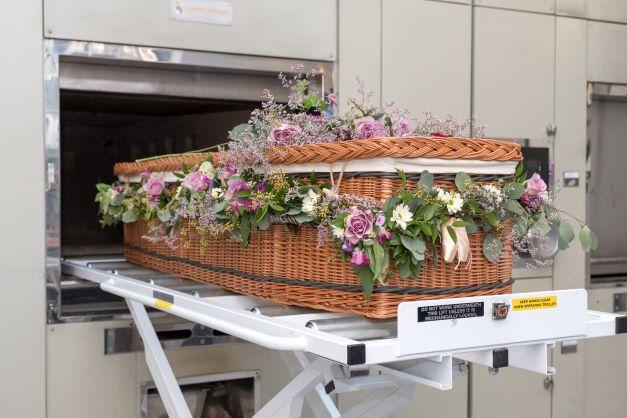Cremation services are one of the most popular way to say goodbye to a loved one for a number of reasons. Chiefly cremation is more cost effective and easier to organise, plus there’s the fact that burial plots are in increasingly short supply but that doesn’t mean cremation is any less dignified or personal to the person who has passed away. As with any funeral there can be a coffin, a service and religious ritual. The only difference is that the body is cremated, not interred.
What is involved in a cremation service?
From the moment they have the body of the deceased in their safekeeping, until the cremation occurs, you’ll be able to rely on your funeral director to take you through every stage of the cremation. From registering the death and sourcing help with finances, to choosing photographs and music. These are all things that can be discussed.
It’s possible to have a service at the crematorium but also in a chapel or church should that be a wish expressed. Mourners usually assemble outside the crematorium to await the arrival of the coffin, which is placed on something called a catafalque. As in most funerals, there’ll be flowers on top of the coffin and a picture of the deceased. The cremation order of service can include poems, music, stories, prayers and hymns. When the service ends the committal begins when the coffin is removed from view and mourners leave the crematorium.
How is a body prepared for cremation?
The funeral director is the person who takes care of the body of the deceased and prepares it for cremation. Bodies are cleaned and dressed maybe in their favourite clothes and sometimes embalmed and preserved in a cooling system until the funeral. There’s usually a coffin, which can be anything from environmentally friendly and affordable cardboard, to custom-made and in this the body is laid so that people may view the deceased in the chapel of rest. There may be religious traditions that have to be observed in which case these will be respected and any jewellery, medical devices such as pacemakers and prosthetic limbs will be removed to ensure there is no adverse reaction in the cremation chamber.
How long does a cremation take?
The service will usually take from 30-40 minutes, after which the actual cremation of the body lasts between one and three hours, with cooling taking another one or two hours.
Can you be cremated without having a service?
Not every family can afford a big funeral and not every individual wants one which is why someone might contemplate a cremation without a service.
This is called a direct cremation and it is a way of saving a lot of money, should that be your objective.
What direct cremation means is the body will be cremated shortly after death without a funeral service. This method is the most affordable way that a person can take their final journey because it literally has no fuss and frills. If there is no service then there is no need to embalm the body or got thorough any other kinds of preparation and there is no mandatory funeral service, which also costs more. It certainly may not be everyone’s idea of a send-off but if money is tight or maybe the deceased wants to ensure their loved ones are provided for with as much as possible then direct cremation is the right choice.
If you wish to know more about our cremation services and all the options that are available to you then head to our cremation services page please get in touch with us by heading to our contact us page.



Comments are closed.